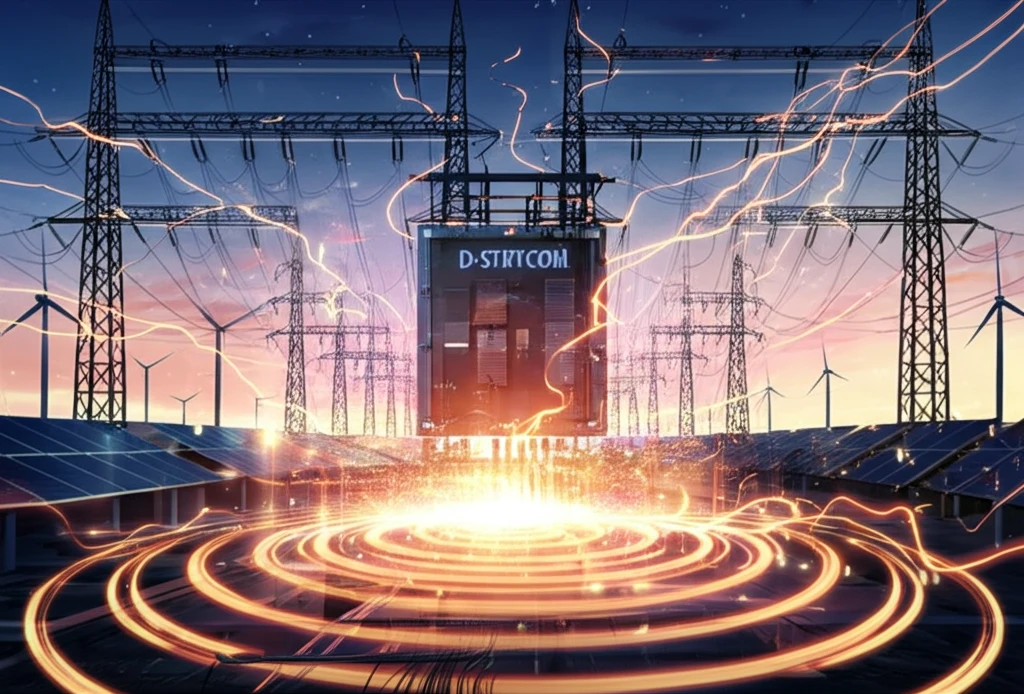
D-STATCOM: The Unsung Hero of a Stable Power Grid
"Discover how advanced power compensation technology is keeping our electricity flowing smoothly and reliably, even with renewable energy sources."
In our increasingly electrified world, consistent and reliable power is more critical than ever. From keeping the lights on to powering our digital devices, we depend on a stable electrical grid. However, the growing integration of renewable energy sources, like solar and wind, presents significant challenges to grid stability. Unlike traditional power plants, renewable sources are often intermittent and unpredictable, leading to fluctuations in voltage and frequency that can disrupt the delicate balance of the grid.
One of the key technologies addressing these challenges is the D-STATCOM, or Distribution Static Compensator. Think of it as a high-tech stabilizer for the power grid, rapidly responding to changes in demand and generation to maintain a steady voltage. It's like a superhero for your electrical outlets, working behind the scenes to prevent blackouts and ensure a consistent flow of power.
This article delves into the workings of a high-power D-STATCOM, exploring its design, functionality, and the critical role it plays in modern power systems. We'll break down the complex technology in an easy-to-understand way, highlighting its importance in enabling a future powered by clean and reliable energy.
How Does D-STATCOM Technology Stabilize the Grid?

At its core, a D-STATCOM is a flexible AC transmission system (FACTS) device that provides reactive power compensation. Reactive power is essential for maintaining voltage stability and ensuring efficient power transfer across the grid. Unlike real power, which performs actual work (like lighting a bulb), reactive power supports the voltage levels necessary for real power to flow.
- Voltage Monitoring: The D-STATCOM continuously monitors the voltage at its connection point on the grid.
- Reactive Power Injection: If the voltage drops (due to increased demand or decreased generation), the D-STATCOM injects reactive power into the grid, boosting the voltage back to its desired level.
- Reactive Power Absorption: Conversely, if the voltage rises too high, the D-STATCOM absorbs reactive power from the grid, reducing the voltage.
- Rapid Response: All of this happens in milliseconds, providing near-instantaneous voltage support.
The Future of Grid Stability: D-STATCOM and Beyond
As renewable energy sources continue to grow, technologies like D-STATCOMs will become even more critical for maintaining a stable and reliable power grid. Their ability to rapidly respond to voltage fluctuations and provide reactive power compensation makes them an essential component of the modern energy landscape. By investing in and developing these advanced technologies, we can ensure a future where clean energy powers our lives without compromising the stability of our electrical systems.
